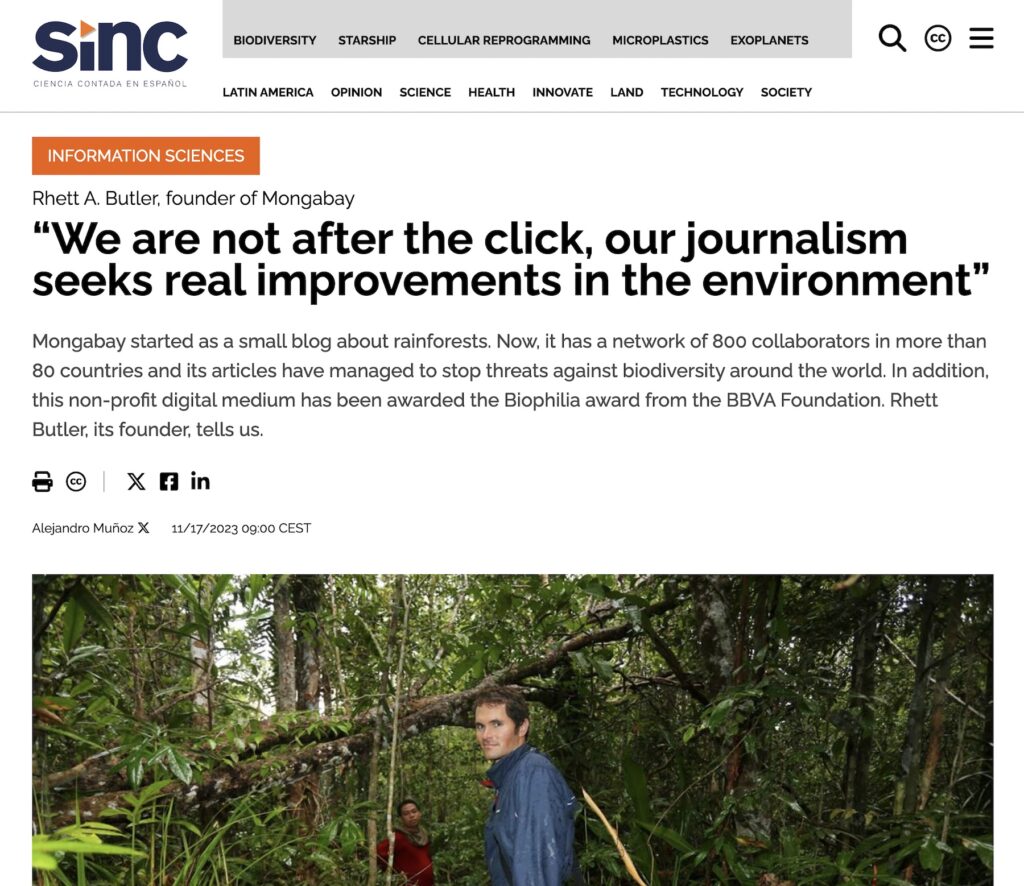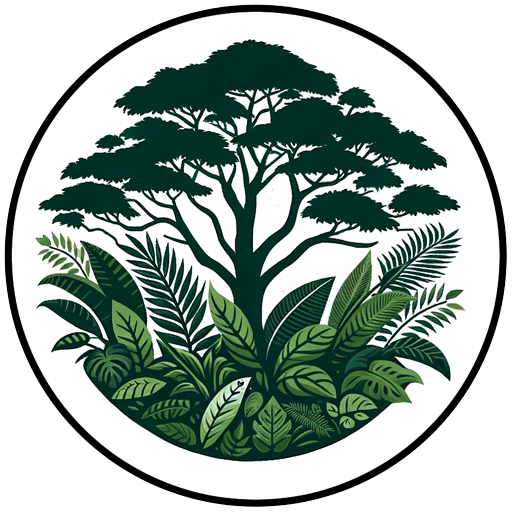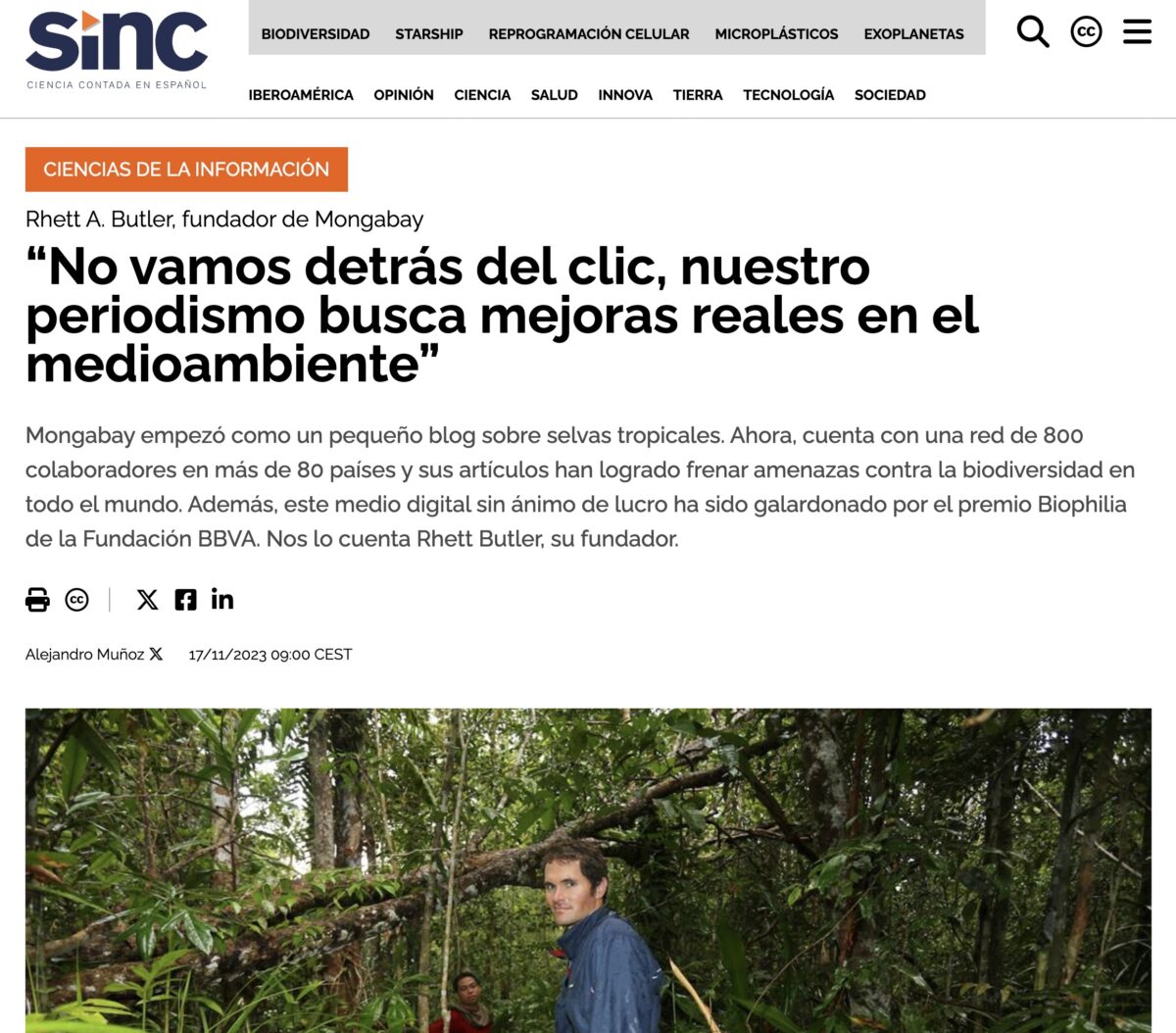An interview with Alejandro Muñoz for Sinc (Ciencia Contada en Español): “No vamos detrás del clic, nuestro periodismo busca mejoras reales en el medioambiente”.
A few extracts translated from from the interview:
Do you think interest in environmental journalism has increased?
Yes. I think the effects of environmental degradation are more evident than ever. This is the case of fires, heat waves, the impact of storms… The fact that these impacts are so serious makes this information more relevant to people.
Sometimes it is difficult to empathize with distant situations. Why should we care about environmental abuses in faraway places like Gabon or Indonesia?
To connect with these problems, we link them to everyday life. One way is to talk about consumer staples. Let’s consider where the coffee or the furniture we use comes from and what the impact is for the people in their places of origin.
We also talk about environmental degradation. For example, if the Amazon is cut down, it could affect rainfall patterns not only in Rio de Janeiro, but also in the global north.
And we think about our audience. If we try to reach someone who works in finance, we propose a story focusing, for example, on the financial implications of the deforestation of the Amazon being relevant to someone who works in an insurance company in Zurich, for example.
While media outlets like National Geographic reduce their staff, Mongabay creates a new newsroom in Africa. What do you do well that others don’t?
We don’t have a ‘legacy’ model that relies heavily on advertising. Mongabay had advertising, but we went to a non-profit model in 2012. This gave us the ability to not chase clicks and focus on impact. In this way, we can almost give away our content. Anyone can use it with or without commercial purposes, because we are not worried about monetizing it.
We are interested in the contribution of our journalism to the world. If our articles appear in major media outlets, where they get more traffic than Mongabay, we fulfill our mission, which is to reach decision makers and key audiences. We see other media as potential collaborators rather than competitors. If we were only chasing clicks, the incentives would be very different.
Instead of seeking advertisers, part of my role is to raise money from people who believe Mongabay journalism is a public service that everyone should benefit from. It is a very different model than National Geographic.
What are Mongabay’s main challenges for the future?
Trends in news consumption and the information ecosystem. Reaching our audiences is becoming more and more complicated.
Many audiences do not understand what is real and what is not real. Many people are more interested in content that doesn’t challenge their worldview and less interested in facts.
On an issue like climate change – where some political affiliations don’t believe in science or scientists or don’t care about environmental issues – it becomes much more difficult to reach those audiences. And other ways must be found to reach and engage them. I think that’s probably the biggest challenge for Mongabay and other media.


